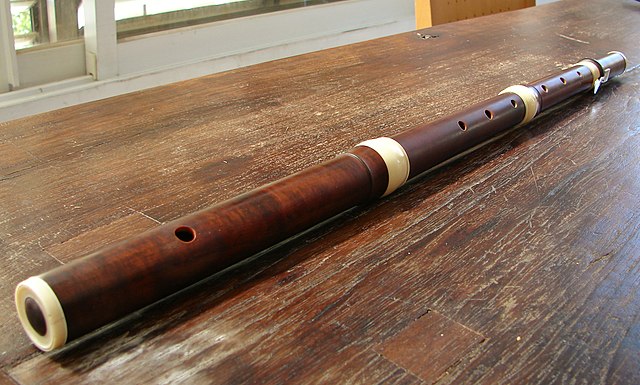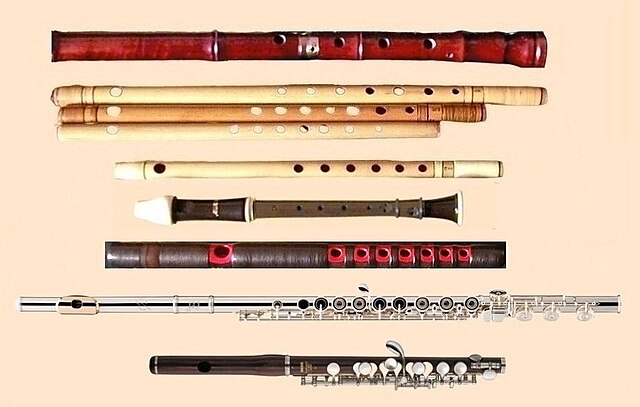The Western concert flute is a family of transverse (side-blown) woodwind instruments made of metal or wood. It is the most common variant of the flute. A musician who plays the flute is called a “flautist” in British English, and a “flutist” in American English.
A modern copy of an 18th-century French traverso, by flute-maker Boaz Berney
Various Baroque Flutes and Recorders in the Berlin Museum of Musical Instruments
An early keyed H.F. Meyer all-wood construction flute in case
Carlo Tommaso Giorgi and his Giorgi flute. The flute was end-blown.
The flute is a member of a family of musical instruments in the woodwind group. Like all woodwinds, flutes are aerophones, producing sound with a vibrating column of air. Unlike woodwind instruments with reeds, a flute produces sound when the player's air flows across an opening. In the Hornbostel–Sachs classification system, flutes are edge-blown aerophones. A musician who plays the flute is called a flautist or flutist.
Shinobue and other flutes
Statue of Krishna playing a flute
Chinese women playing flutes, from the 12th-century Song dynasty remake of the Night Revels of Han Xizai, originally by Gu Hongzhong (10th century)
Bone flute made of a goat's tibia, 11th–13th century AD.








